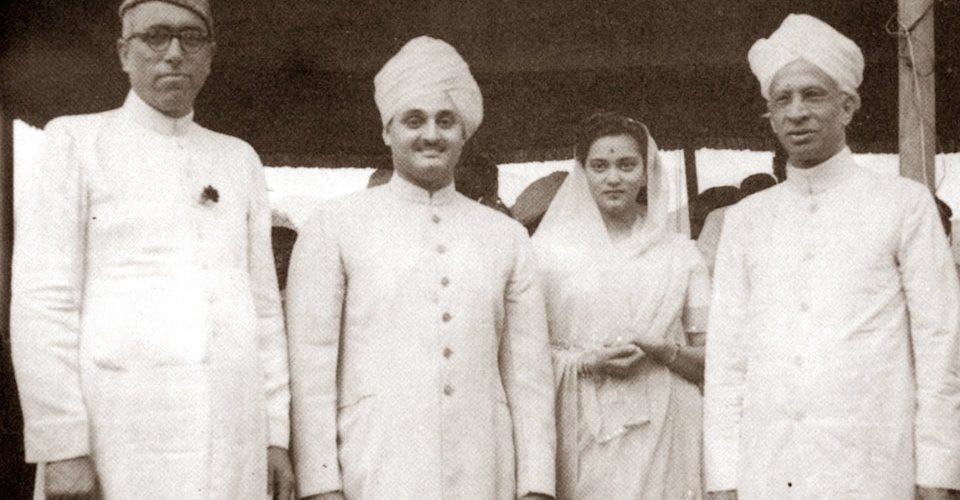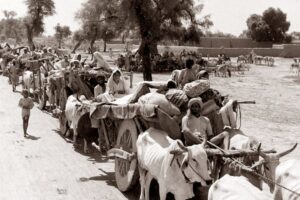A large collection of documents on the Kashmir issue from the time of Partition
- Background to the Kashmir Issue
Facts of the case
(A note prepared by the Ministry of External Affair in the early 1950s, probably 1951)
1) Invasion of the State by tribesmen and Pakistan nationals through or from Pakistan territory on October 20, 1947.
- Kofi Annan endorses Indian stand – March 2001
In a firm endorsement of India’s stand, United Nation’s Secretary General Kofi Annan has said the Lahore Declaration and not UN resolutions could pave the way for a solution to the Kashmir issue.
- The Kargil Review Committee Report – 1999
Against the backdrop of an animated public discussion on Pakistan’s aggression in Kargil, the Union Government vide its order dated July 29, 1999 constituted a Committee to look into the episode with the following Terms of Reference:-
i. to review the events leading up to the Pakistani aggression in the Kargil
district of Ladakh in Jammu and Kashmir; and
ii. To recommended such measures as are considered necessary to safeguard national security against such armed intrusions.
- Nehru’s Plan For Peace – Selig S. Harrison (June 1979)
Twice during his sickly last months, when he knew the end was near, the late Prime Minister Nehru toyed with an ambitious idea for a comprehensive detente in South Asia. It was too ambitious for its time, but the East Bengal tragedy has given it new meaning and validity as a long-term alternative to the present prospect of multiplying Indo-Pakistan conflict.
The essence of the Nehru plan was his conviction that the Kashmir and East Pakistan problems are inseparable parts of the same larger problem. Both are historical accidents resulting from the hurried partition of 1947, he believed, and both symbolized in differing ways the artificiality of the Pakistani ‘Two Nation” concept with its emphasis on Hindu and Moslem religious identity as the sole basis for the political structuring of the subcontinent
- Lettre de l’ambassadeur de France à Karachi (1959)
Lorsque sonnerait l’heure de la guerre sainte, le Pakistan aurait beau jeu pour rappeler qu’il n’il a jamais reconnu l’annexion du Cachemire, qu’il a du céder à la force et qu’il entend seulement recouvrer son bien légitime. Les revendications sur le Punjab Oriental et sur le Bengale Occidental seraient présentées simultanément; elles seraient alors appuyées par les armes. Les minarets des mosquées de Delhi se profilent dans ces anticipations comme un mirage, mais ces rêves sont pour beaucoup de Pakistanais – du moins pour les dirigeants – la réalité de demain…
- The Simla Agreement – July 2, 1972
Agreement between India and Pakistan signed in Simla in 1972
- The Sinking of the Ghazi (November 1971?)
When was the Pakistani submarine really sunk? This is the official version.
- Foreign Relations of the United States, 1969-1976, Volume XI, South Asia Crisis, 1971
Overview
The scope of this volume is limited to the political crisis that began in Pakistan in March 1971 with the government’s efforts to suppress Bengali demands for virtual autonomy in East Pakistan and concluded with the establishment of the state of Bangladesh at the end of the year. The limited time frame covered by the volume enabled the editor to compile the record of the Nixon administration’s response to the crisis in considerable detail. The crisis was managed largely out of the White House by President Nixon and his Assistant for National Security Affairs Henry Kissinger, with the support of the National Security Council staff. The focus of the volume is on the management of the crisis by Nixon and Kissinger.
- Official History of 1971 War
Link to the Official History of the 1971 Bangladesh Liberation War.
- The Tashkent Declaration – January 1966
The Declaration signed between India and Pakistan in Tashkent in 1966
- The Sino-Pak Frontier Agreement – 1963
Agreement between China and Pakistan on the Kashmir border
- Letter from Ven. Kushok Bakula to Jawaharlal Nehru – September 1962
I am fully conscious of the fact that recent developments on the Sino-Indian border and the growing threat from the Chinese forces to the country’s territorial integrity have engaged your attention…
- Article 370 – 1952
Article 370 of the Indian Constitution. Temporary provisions with respect to the State of Jammu and Kashmir.
- Indo-Pakistan Accord on the LOC – July 29, 1949
Agreement between Military Representatives of India and Pakistan regarding the Establishment of a Cease-fire Line in the State of Jammu and Kashmir.
- Memorandum from the Ladakh Representative to the Indian Prime Minister – May 1949
Memorandum submitted by Shri Cheewang Rigzin, President Buddhist Association, Ladakh to the Prime Minister of India on behalf of the people of Ladakh, May 4, 1949.
- Un Resolution for a cease-fire – January 5, 1949
Resolution of the the United Nations Commission for India and Pakistan of January 5, 1949 for a cease-fire.
- UN Resolution S-1100 – August 13, 1948
Resolution adopted by the United Nations Commission for India and Pakistan on 13 August.
- Letter from Nehru to Patel – February 9, 1948
It seems to me that the wisest policy he can pursue at the present moment is to do nothing at all.
- Maharaja Hari Singh to Patel – January 31, 1948
Several thoughts have been turning round my mind and I have decided to lay them before you for sympathetic consideration and friendly advice. I do not wish to take any step except with your agreement.
- From the US Representative to Secretary of State – January 28, 1948
It is possible that [the] principal purpose of Abdullah’s visit was to make clear to US that there is a third alternative, namely, independence. He seemed overly anxious to get this point across, and made quite a long and impassioned statement on subject.
- India complains to the Security Council – January 1, 1948
The Government of India request the Security Council to call upon Pakistan to put an end immediately to the giving of such assistance, which is an act of aggression against India. If Pakistan does not do so, the Government of India may be compelled, in self-defence to enter Pakistan territory…
- A short history of J&K Operations (1947-48)
Link to an abridged version of the Official History of J&K Operations (1947-48).
- Letter from Nehru to Patel – December 23, 1947
Draft of Sardar Patel resignation letter to Nehru. Patel objects to Nehru’s interference in Kashmir Affairs under the jurisdiction of the State’s Ministry looked after by Patel.
- Discussions between Nehru and Liaquat Ali Khan – December 22, 1947
Note of the discussions between Nehru and Liaquat Ali Khan by Lord Mounbatten.
- Letter from Mahajan to Sardar Patel – December 11, 1947
From Mehr Chand Mahajan to Sardar Patel complaining against Hitlerian Methods of Sheikh Abdullah in Administration of Jammu and Kashmir.
- Letter from Mountbatten to Nehru – November 3, 1947
Letter from Mountbatten to Nehru on the Bitter Reactions of Liaquat Ali and Jinnah on the Accession of Kashmir to Indian Union.
- Letter from US Chargé in Pakistan to Secretary of State – October 28, 1947
Letter from US Ambassador in India to US Secretary State, November 3, 1947 showing the US reactions after the accession of J&K to India.
- Letter from Nehru to Maharaja – October 27, 1947
Allow me to congratulate you on the wise decisions that you have taken. I earnestly hope that they will lead not only to the effective protection of the Kashmir State in the present, but also to the freedom and well-being of Kashmir and India as a whole.
- Jawaharlal, do you want Kashmir – October 26, 1947
Sam Manekshaw, the first Field Marshal in the Indian Army, was witeness of the crucial meeting after that the Maharaja Hari Singh signed the sucession… Recorded in an interview with Prem Shankar Jha (Kashmir 1947, Rival Versions of History).
- Instrument of Accession – October 26, 1947
I hereby declare that I accede to the Dominion of India…
- Letter from Nehru to Vallabhbhai Patel – October 5, 1947
Enclosing a note describing the atrocities committed against Muslims and stray cases of looting, assault and murder of Hindus in the area.
- Treaty of Amritsar – 1846
The British Government transfers and makes over for ever in independent possession to Maharajah Gulab Singh and the heirs male of his body all the hilly or mountainous country with its dependencies situated to the eastward of the River Indus and the westward of the River Ravi…







